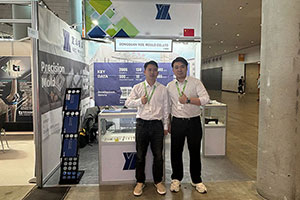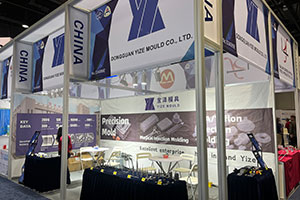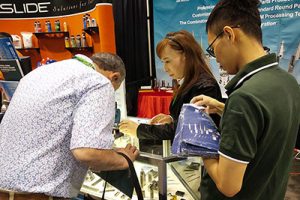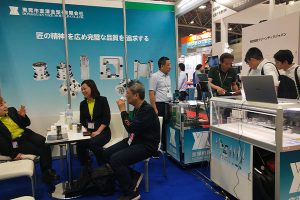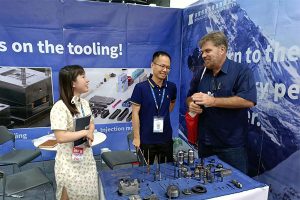A Thorough Exploration of the Causes and Prevention of Tungsten Carbide Desoldering
In the vast industrial landscape, tungsten carbide shines like a bright star with its high hardness and excellent wear resistance, finding widespread applications in numerous fields. However, during the use […]
In the vast industrial landscape, tungsten carbide shines like a bright star with its high hardness and excellent wear resistance, finding widespread applications in numerous fields. However, during the use of tungsten carbide components, the phenomenon of desoldering occasionally emerges like hidden reefs, causing troubles for production from time to time. Desoldering not only significantly degrades the quality and performance of products but may also trigger equipment failures and pose safety hazards. Therefore, figuring out the causes of tungsten carbide desoldering is of utmost urgency. Next, let’s delve deep into the main reasons for tungsten carbide desoldering and provide practical preventive measures.
1. Pre-welding Treatment: Details Determine Success or Failure
Proper treatment of tungsten carbide before welding is the key to ensuring welding quality. If the treatment is inadequate, desoldering issues will come knocking. There are mainly the following two situations.
Nuestra actividad de fábrica: piezas de carburo, piezas de molde, moldes de inyección médica, moldes de inyección de precisión, moldeo por inyección de teflón PFA, accesorios de tubo PFA. correo electrónico: [email protected],whatsapp:+8613302615729.
- Lack of Brazing Surface Treatment: If the brazing surface of tungsten carbide is not subjected to sandblasting or polishing treatment, the oxide layer on the surface acts like a barrier, reducing the wetting action of the brazing filler metal and significantly weakening the bonding strength of the weld joint. Therefore, the brazing surface must be sandblasted or polished before welding to remove the oxide layer and impurities, thereby improving the wettability of the brazing filler metal and laying a solid foundation for welding quality.
- Improper Use of Brazing Flux: Brazing flux plays a crucial role in the welding process. If the wrong brazing flux is selected or the dosage is incorrect, desoldering problems will follow. For example, when using borax as a brazing flux, if the borax contains a relatively large amount of moisture, it cannot effectively deoxidize, resulting in the brazing filler metal failing to properly wet the brazed surface and leading to inevitable desoldering.
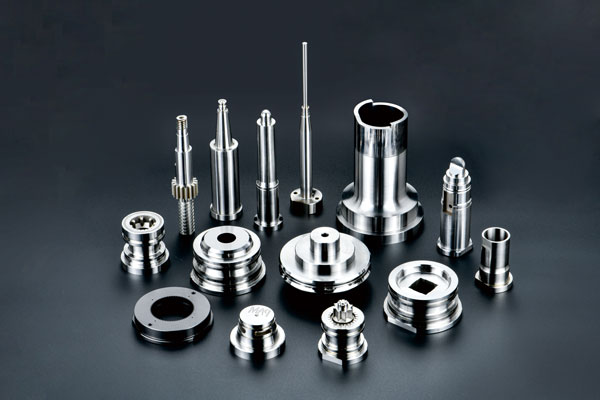
2. Welding Temperature: Precise Control Is the Key
Welding temperature has a crucial impact on welding quality. If the temperature is not controlled properly, desoldering will occur. Specifically, there are the following two situations.
- Excessive Temperature: If the welding temperature is too high, oxidation is likely to occur in the weld joint, acting like a “time bomb” that reduces the strength of the weld joint. Moreover, high temperatures may cause the brazing filler metal to over-melt, resulting in deformation or cracks in the weld joint, seriously affecting the welding quality.
- Insufficient Temperature: If the welding temperature is too low, the brazing filler metal cannot fully melt and wet the brazed surface, only forming a relatively thick weld joint. Such a weld joint is often filled with pores and slag inclusions internally, like a “porous and fragile fortress,” greatly reducing its strength. Desoldering is prone to occur during grinding or use.
Therefore, the welding temperature must be strictly controlled during the welding process. Generally, the appropriate welding temperature should be 30 – 50℃ above the melting point of the brazing filler metal. In actual operation, adjustments can be made flexibly according to the actual situation to achieve the best welding effect.
3. Slag Removal: Timely and Thorough for Quality Assurance
During welding, the melting of brazing flux produces slag. If this slag is not removed in a timely or thorough manner, it will remain in the weld joint like “garbage,” reducing the strength of the weld joint and causing desoldering. Therefore, attention must be paid to timely slag removal during the welding process to ensure the cleanliness of the weld joint.
4. Other Factors: Unignorable “Minor Troubles”
In addition to the above reasons, some other factors may also lead to tungsten carbide desoldering. For example, vibrations or impacts during the welding process may cause the weld joint to crack; an unreasonable design of the weld joint may lead to stress concentration and trigger desoldering; poor-quality welding materials, insufficient skill levels of operators, and an unfavorable welding environment may also affect the welding quality.
Preventive Measures: A Multi-Pronged Approach to Prevent Desoldering
To avoid tungsten carbide desoldering, we can take the following preventive measures.
- Conduct sufficient sandblasting or polishing treatment on the brazing surface before welding to remove the oxide layer and impurities.
- Carefully select an appropriate brazing flux and strictly control its dosage and usage method.
- Precisely control the welding temperature to ensure it fluctuates within an appropriate range.
- Remove slag on time during the welding process to ensure the cleanliness of the weld joint.
- Optimize the design of the weld joint to avoid stress concentration.
- Select high-quality welding materials and improve the skill levels of operators.
- Pay attention to controlling the welding environment to avoid adverse factors such as vibrations and impacts from interfere with the welding quality.
In conclusion, understanding and mastering the main causes and preventive measures of tungsten carbide desoldering is of great significance for improving product quality and ensuring equipment safety. By strengthening pre – welding treatment, precisely controlling the welding temperature, timely slag removal, and paying attention to other influencing factors, the incidence of tungsten carbide desoldering can be effectively reduced, making production smoother.


